 |
||||||||

 Citizen Scientists Step Up to Help
Citizen Scientists Step Up to Help
By Victoria Parsons
More and more kids are realizing that the natural resources and wildlife in their neighborhoods are threatened by development, pollution and climate change. Instead of waiting for someone else to fix the problem, they’re stepping up to the plate and becoming citizen-scientists who track changes in their yards and nearby nature preserves. The data they contribute is critically important to scientists monitoring changes on both regional and world-wide scales.
“There aren’t enough scientists in the world so we must have citizen-scientists to help,” says George Kish, a hydrologist with the U.S. Geological Survey and project manager for the National Phenology Network.
“Some of our most important data comes from fishermen,” adds Luiz Barbieri, director of the marine fisheries research section for the Florida Fish and Wildlife Research Institute. “We rely heavily on information people send in about the size, number and location of fish they catch to track populations of snook and other fish.”
Technology like the internet and smart phones makes it easy for nearly everyone to contribute. “We’re looking to get younger people involved because they understand the technology and really want to make a difference,” says Rick Roberts, executive director of the Snook and Gamefish Foundation.
Opportunities to work as a citizen-scientist abound. Here’s a look at some programs in the Tampa Bay region where kids can get involved.
TRACK FISH
 Sometimes the fish you didn’t catch is as important as the ones you did – particularly if you were angling for popular gamefish like snook and tarpon.
Sometimes the fish you didn’t catch is as important as the ones you did – particularly if you were angling for popular gamefish like snook and tarpon.
“One of the most important issues is the number of fish that were released by fishermen, and how healthy they were when released,” Barbieri says. “It’s really difficult for us to get that information without help from fishermen.”
In fact, data collected through the Snook Foundation’s online Angler Action program helped scientists at FWRI document the rebound in snook populations following the devastating freezes in 2010. “Some people have a lack of confidence in the data that are used in making decisions, so this is a way we as fisherman can help,” Roberts adds.
And while Angler Action provides scientists with important data, it also gives anglers a complete history of their fishing trips, including photos and locations. “We won’t share locations though,” Roberts said.
LEARN MORE:
You can help!
More than 90% of snook are released. You can help increase survival rates with these tips from the University of Florida: http://edis.ifas.ufl.edu/pdffiles/SG/SG04700.pdf
SAVE FROGS
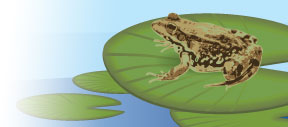 Across the country, researchers are recognizing that frogs are the canaries in our ecosystems, giving us an early warning if their habitats are in trouble. You can help count frogs in your neighborhood as part of the Frog Listening Network created by the Hillsborough River Watershed Alliance and Lowry Park Zoo.
Across the country, researchers are recognizing that frogs are the canaries in our ecosystems, giving us an early warning if their habitats are in trouble. You can help count frogs in your neighborhood as part of the Frog Listening Network created by the Hillsborough River Watershed Alliance and Lowry Park Zoo.
A new MP3 available online at http://www.hillsborough.wateratlas.usf.edu/fln/ describes where different types of frogs like to live and then plays the sounds they make so you can match them up. You can listen in your backyard or download the MP3 and visit nearby parks. Data is recorded permanently on the Water Atlas (see story on page 6) so scientists can track changes in frog populations over time.
LEARN MORE:
Visit the new exhibit at Lowry Park Zoo to see and hear Florida’s frogs.
You can help!
Build homes for tree frogs: www.edis.ifas.ufl.edu/uw308
VIRTUAL BIRDS
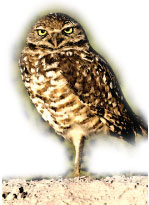 Some days it’s just too hot or wet for citizen-scientists to get outside, but that doesn’t mean you can’t help out. Cornell Lab of Ornithology operates NestCams that record live images of birds courting, mating, laying eggs and raising their young. More than eight million images have been recorded – and Cornell needs help classifying them.
Some days it’s just too hot or wet for citizen-scientists to get outside, but that doesn’t mean you can’t help out. Cornell Lab of Ornithology operates NestCams that record live images of birds courting, mating, laying eggs and raising their young. More than eight million images have been recorded – and Cornell needs help classifying them.
It’s easy and fun. Just log onto http://watch.birds.cornell.edu/nestcams/clicker/clicker/index and choose the bird and activity you’d like to classify. You can even play games and win prizes.
And if you’re really, really good, you can get your own motion-activated webcam for about $200. Mount it near your birdfeeder and see what drops by for a meal.
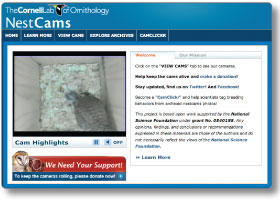 LEARN MORE:
LEARN MORE:
about Florida’s threatened birds: http://fl.audubon.org/floridas-imperiled-birds
You can help!
Local Audubon societies need bird stewards to protect nesting sites on beaches. You’ll need an adult to participate but it’s a great way to make a difference in Tampa Bay.
www.baysoundings.com/summer2011/Stories/Stewards-Protect-Beach-Nesting-Birds.asp
COUNT CATERPILLARS
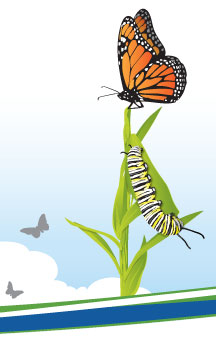 Anybody can plant a butterfly garden, but it takes a special kind of citizen-scientist to plant a garden for caterpillars. Since nearly every caterpillar needs very specific food (often weeds), nobody will have butterflies unless somebody plants food for their caterpillars. In some neighborhoods, those plants are so rare that female butterflies will fly a mile to find them.
Anybody can plant a butterfly garden, but it takes a special kind of citizen-scientist to plant a garden for caterpillars. Since nearly every caterpillar needs very specific food (often weeds), nobody will have butterflies unless somebody plants food for their caterpillars. In some neighborhoods, those plants are so rare that female butterflies will fly a mile to find them.
Multiple opportunities exist to track butterfly populations, including Monarch Watch in Kansas and the University of Minnesota’s monarch larva monitoring project. Locally, the Florida Butterfly Monitoring Network offers training at Lowry Park Zoo and Camp Bayou but kids will need to find a grown-up partner. You can see caterpillars growing at MOSI and they sometimes need volunteer help too.
LEARN MORE:
www.monarchwatch.org, www.monarchlab.org, www.flbutterflies.net or www.mosi.org
You can help!
Plant caterpillar food in your yard, and encourage your parents to stop using pesticides that harm them. www.baysoundings.com/fall09/Stories/butterflygardens.asp or http://edis.ifas.ufl.edu/in564
WATER QUALITY
Water is what makes the Tampa Bay region such a special place -- but too many people living near our rivers, lakes, streams and bays can cause contamination. If you’ve ever wondered if the water in your neighborhood pond, creek or lake was clean, now is a great time to check it out.
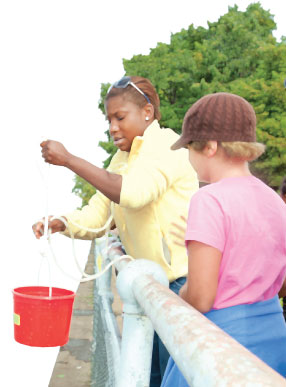 Citizen-scientists are particularly important to building a long-term database on water quality because it can be difficult to measure. Not only does it change from month to month, it can vary dramatically across the spectrum of rivers, springs, creeks, swamps, estuaries, wetlands, lakes and bays. In the Tampa Bay region, two separate programs offer families and organizations the opportunity to monitor water quality.
Citizen-scientists are particularly important to building a long-term database on water quality because it can be difficult to measure. Not only does it change from month to month, it can vary dramatically across the spectrum of rivers, springs, creeks, swamps, estuaries, wetlands, lakes and bays. In the Tampa Bay region, two separate programs offer families and organizations the opportunity to monitor water quality.
The largest is the World Water Monitoring Challenge (previously known as World Water Monitoring Day) with more than 300,000 participants in 77 countries last year. Water is tested at least annually, but as often as monthly, with reports submitted online where they become part of a permanent record. A limited number of test kits are available to organizations including scout troops, church groups or homeowners associations by calling the Southwest Florida Water Management District. You can order the free kit online
at www.WaterMatters.org/publications.
Closer to home, 1800 participants monitor water monthly through Florida Lake Watch. “Participants must have access to a lake and a way to get out to the middle of it to collect samples, but it’s a great project for middle and high school community service hours,” says Dan Willis, coordinator of research program services. “Some families even pass down the job to younger siblings when the older kids go off to college.”
LEARN MORE:
World Water Monitoring Challenge: www.worldwatermonitoringday.org or Florida LakeWatch: www.lakewatch.ifas.ufl.edu
You can help!
Check out the YouTube video on how kids can help improve water quality in your own neighborhood:
www.youtube.com/watch?v=JaxSXeXTIHU
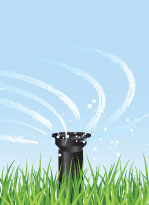 EVERY DROP COUNTS
EVERY DROP COUNTS
How much water does your family waste every month — and how much money could you save if you fixed the problems?
The average American home leaks more than 10,000 gallons of water every year, a full month's worth for most of us. Ask your parents how much that average monthly bill would be, then put on your citizen-scientist cap and look for ways to save.
And in Florida, half of our water is used to irrigate lawns and landscapes. You can check to see if your sprinklers are working right, and make sure the rain sensor is working so you're not watering if you don't need to.
LEARN MORE:
www.watermatters.org/conservation
BUDBURSTS
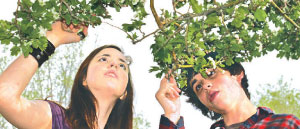 The philosopher Henry David Thoreau probably never heard of climate change but his detailed observations of plants near Walden Pond in the 1850s are invaluable to scientists tracking rising temperatures today. His notes show that some plants are blooming a week earlier in Massachusetts — a clear indication that higher temperatures impact natural processes.
The philosopher Henry David Thoreau probably never heard of climate change but his detailed observations of plants near Walden Pond in the 1850s are invaluable to scientists tracking rising temperatures today. His notes show that some plants are blooming a week earlier in Massachusetts — a clear indication that higher temperatures impact natural processes.
Two national groups are recruiting citizen-scientists of all ages to document when those natural processes occur in their yards, neighborhoods and nearby parks. It’s easy and fun. You can sign up online and then print datasheets on the plants you’re tracking — or download a smart phone app that lets you input data from the field.
LEARN MORE:
Sign up at Project Budburst (http://neoninc.org/budburst/) or USA Phenology Network (www.usanpn.org)
You can help!
The University of South Florida Botanical Gardens has identified native plants that it is tracking over time, they’re also tracking the birds and butterflies that use them. Visit www.gardens.usf.edu.
TALLYING BACKYARD BIRDS
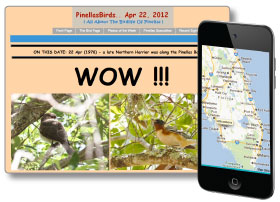 The Audubon Society’s big survey events are held at Christmas and then again in February, but summer is a great time to learn about birds so you’re ready to participate later. Local Audubon societies have birding classes for beginners every month at Lettuce Lake Park in Tampa, Boyd Hill Nature Preserve in St. Petersburg and Moccasin Lake Nature Park in Clearwater. Bird walks are regularly scheduled at Weedon Island, Fort DeSoto and Brooker Creek Preserve.
The Audubon Society’s big survey events are held at Christmas and then again in February, but summer is a great time to learn about birds so you’re ready to participate later. Local Audubon societies have birding classes for beginners every month at Lettuce Lake Park in Tampa, Boyd Hill Nature Preserve in St. Petersburg and Moccasin Lake Nature Park in Clearwater. Bird walks are regularly scheduled at Weedon Island, Fort DeSoto and Brooker Creek Preserve.
Smart phone apps and online groups also can help you learn to identify birds. Apps like Audubon’s field guide and iBird give you amazing details about birds, including replications of their sounds so you can identify a bird even if you don’t actually see it. (Some of the apps are free, but the most complete versions cost $9.99) Online groups, including Ron Smith’s Pinellas Birds and the Facebook group Hillsborough County Birds, are great resources with experts available to answer questions or help identify birds.
LEARN MORE:
Pinellas birds, www.pinellasbirds.com, Hillsborough birds, https://www.facebook.com/groups/204170576291372/
You can help
Learn about beach-nesting birds while protecting their sanctuaries from intrusion. www.baysoundings.com/summer2011/Stories/Stewards-Protect-Beach-Nesting-Birds.asp
GREAT BAY SCALLOP SEARCH
Of all the citizen-scientist projects in Tampa Bay, the Great Bay Scallop Search has got to be the most fun. You get to snorkel around the bay counting creatures that look like something a mad scientist dreamed up – and even if you don’t find a scallop, you’re sure to discover different kinds of sea animals.
It’s also very important to scientists because scallops are extremely sensitive to water quality and their populations change dramatically from year to year. Searchers found 674 scallops in 2009 but just five last year. Experts are hopeful that populations have rebounded this year after an extra-warm winter but they’ll need extra eyes in the water to document the difference.
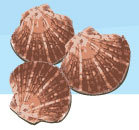 This year’s Great Bay Scallop Search will be held on Aug. 18. Registration won’t begin until July but you can sign up now to be notified at www.tampabaywatch.org
This year’s Great Bay Scallop Search will be held on Aug. 18. Registration won’t begin until July but you can sign up now to be notified at www.tampabaywatch.org
LEARN MORE:
Visit the Florida Fish and Wildlife Research Institute’s site on scallops at http://myfwc.com/research/saltwater/mollusc/bay-scallops/
You can help!
Scallops are extremely sensitive to water quality, particularly high levels of nutrients. Talk to your parents about how the fertilizer used on your landscape can contaminate Tampa Bay. Visit www.tbep.org/help/lawn_fertilizer.html for more information.
COUNTING CRABS
The first thing Tiffany Black tells kids about horseshoe crabs is that they aren’t really crabs – and they have lots of little legs but can’t pinch or bite!
Like many of the critters tracked by citizen-scientists, horseshoe crabs are threatened by habitat loss. Scientists with the Florida Fish and Wildlife Research Institute have asked for help identifying where the horseshoe crabs mate. “We know they’re most likely to come ashore at high tide, just before, during or after a new or full moon,” said Black.
Thousands of reports have been filed since FWRI first asked for help in 2002, but much more information is needed. “Anecdotally, we hear that there are a lot fewer horseshoe crabs now than there were 20 or 30 years ago, but we don’t have the baseline to measure it.”
Reports can be filed online at www.myfwc.com, then click on the “Submit a Horseshoe Crab Survey” link, then “Florida Horseshoe Crab Spawning Beach Survey.” You can also email findings to horseshoe@MyFWC.com
LEARN MORE:
http://myfwc.com/research/saltwater/crustaceans-marine-arthropods/horseshoe-crabs/
You can help!
If you see a horseshoe crab upside down, take a moment to flip it over. Gently handle it on the edge of its shell, not its tail. For a video of the process, visit www.horseshoecrab.org/act/flipem.html
SCOOP THAT POOP
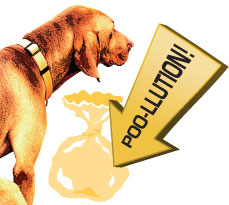 Every little pile adds up — but everybody can do their part to prevent “poo-llution.”
Every little pile adds up — but everybody can do their part to prevent “poo-llution.”
About a half-million dogs in the Tampa Bay region produce about 125 tons of poop per day – and only about 40% of it is picked up. That leaves about 50 tons of poop on the ground to wash into creeks, rivers, ponds and lakes, and eventually into Tampa Bay.
If you have a dog, make sure you clean up behind it. You can also encourage your friends to do their part at local parks and ball fields. It’s easy to make a pooper scooper dispenser. Just take two clean plastic bottles, cut off the bottom of one and the top of the other so they fit together. Cut little holes in the top for a hanger and a larger hole in the back to refill with plastic bags from newspapers or grocery stores.
You can even insert a special note or a poster to tell your friends why it’s important to keep our parks and neighborhoods clean.
LEARN MORE:
You can help!
Step-by-step directions to make a pooper scooper dispenser with a link to posters you can insert in your creation. www.baysoundings.com/pooperscooper
BACKYARD BUGS
 Who could resist a book with a title like “The Secret Lives of Backyard Bugs?”
Who could resist a book with a title like “The Secret Lives of Backyard Bugs?”
Naturalists know that the best place to enjoy nature is somewhere close at hand, so it’s easy to see the seasons change and watch what happens to plants, animals and bugs. Secret Lives makes it even more fun and interesting for beginning citizen-scientists as well as experts who may specialize in other critters.
Written and photographed by a brother-sister team who admit to being “kids who never grew up,” Secret Lives starts at ground level with a section on composting companions. I was delighted to read that roly-polys do more than entertain toddlers – they’re crustaceans that feed on dead plant matter so nutrients return to the soil. (Slugs and snails have some redeeming value too, but I don’t think I’ll ever learn to like them!)
Even critters that initially invoke fear, like bees and spiders, are fascinating from a life-cycle perspective that highlights their roles in an ecosystem. The book also clears up common questions about backyard bugs: what’s the difference between bees and wasps, or between butterflies and moths, even between damselflies and dragonflies.
The photography, 90% of which was taken in a small yard in Kentucky, is amazing. Macro views allow you to recognize the bugs you see daily but micro views show details that highlight their “secret lives.”
Although written for kids, I was enthralled to learn more about the critters who share my backyard with me. I’ve already promised my copy to a young friend, but I’m sure I’ll be buying more to share with other kids so they can learn to love bugs too!
